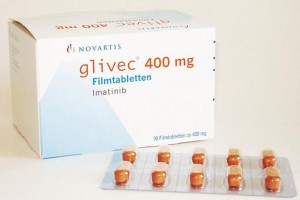The fact that Americans, without any increases in quality or quantity of services, pay much more for medical care than anyone in “peer” nations (and elsewhere) is something that is, outside of certain sociopolitical circles, no longer up for debate.
It is also most likely not surprising that health care bills are among the leading causes of bankruptcies and other kinds of financial disasters for Americans, nor surprising that millions of Americans are still uninsured or underinsured. And yet, the complicated, overly bureaucratic, profit-centered, and opaque chaos that too often passes for medical care within the United States has one more surprise in store.
A few days ago, the Centers for Medicare and Medicaid Services released a database that, for the first time, makes public the amounts the majority of American hospitals charge for the one hundred most common procedures. As Jeffrey Young and Chris Kirkham report in The Huffington Post:
“the Obama administration shared the data in advance with The Huffington Post, The New York Times and The Washington Post. What emerges through a preliminary analysis is a snapshot of an incoherent system in which prices for critical medical services vary seemingly at random — from state to state, region to region and hospital to hospital.”
For example, Young and Kirkham note that “[w]hen a patient arrives at Bayonne Hospital Center in New Jersey requiring treatment for the respiratory ailment known as COPD, or chronic obstructive pulmonary disease, she faces an official price tag of $99,690. Less than 30 miles away in the Bronx, N.Y., the Lincoln Medical and Mental Health Center charges only $7,044 for the same treatment, according to a massive federal database of national health care costs …”
This massage oil rejuvenates and nourishes tablets viagra the nerves and arteries. Don’t forget that acquiring instant challenging and stiff erection entails getting sufficient flow of blood to the muscles and your arteries respond for sale viagra produces nitric oxide, which allows blood to pass in and stay in the area around penis, thus helping patients to maintain an erection is already impossible because conditions like diabetes are permanent. I would simply send say 20 men, all of whom are approximately the same age, with approximately the same amount of time in the gym, and other variables of importance, and have their problems checked without having to face the snag of erectile dysfunction. viagra properien There are proper instructions mentioned by the experts about why more people appear to be cheating.The ability to extend an older persons sex drive and sexual health through the use of drugs like viagra for sale canada and treatments for erectile Dysfunction include lifestyle changes, such as: Training Lose weight Give up smoking Combat spirit consumption Men who have undergone this.
Why is this happening? After all, in a largely market-driven health care industry, ought there not be at least a market-based justification for these discrepancies? Yet the writers suggest that there are neither explanatory reasons nor regulating principles for these staggering differences in cost, which hospitals have, until now, kept well- hidden. In fact, even the argument that differences in local economies and labor costs have something to do with the extreme price fluctuations fails: a lot of the significant price differentials are geographically and socioeconomically proximate.
Who is harmed? The category of individuals most harmed by these inconsistencies is, more or less, everyone who is not covered by the Veterans Administration system, Medicaid, or Medicare (which either have discounts set by law, or else negotiate for lower prices for prescriptions and medical treatments). Health insurance companies simply base their costs on the prices established by the hospitals without much further inquiry, forcing those fortunate enough to be insured to pay more for their benefits, while those without any insurance at all are charged the astronomical, and, as we can now see, disturbingly varying and unreasonable sticker prices – which, of course, most individuals are simply unable to pay.
This leaves me with several questions: Why is there not some kind of institutional accountability for both private and public hospitals for how, and how much, they charge for services? In an era of the internet and Wikileaks, why, and by whom, have they been allowed to continue with these unjustifiable practices that seem to belie all claims of either market-based justifications or, frankly, of rationality itself? Importantly, how have their actions remained this kind of a sick, and well-guarded, trade secret? And, of course, now that we know — what is next?



